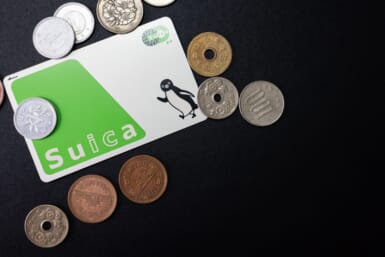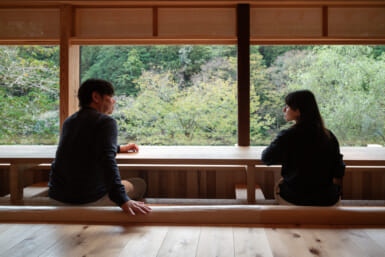It’s the damn uniforms—or, to be more precise, it’s the damn ideological mind-set that creates a system wherein group uniformity is valued over the rapscallion and unpredictable behavior of individuals outside the group. (I know, I know: we’ve all been through this before, and I refuse even to mention the interaction of protruding nails and hammers.)
I’m now looking at photographs of workers at Snow Brand Milk Products Company’s Osaka plant examining boxes of their products that were shipped back to the factory after tens of thousands of people were made sick by bacteria-tainted milk. It’s a veritable symphony in white.
Folks in white shoes, white trousers, white shirts, white gloves, white hats and white face-masks are with remarkable coordination shuttling white crates to white tables upon which additional white-costumed minions wearing white hair nets are bent over examining (sniffing?) the contaminated white product as it parades past on a white conveyor belt. Wow.
The photographs are eerily similar to the uniformly gray-clad workers at the power plant last year who knelt, stooped, pointed, pondered, clip-boarded, measured and puzzled over a “radiation event” which erupted as the result of extreme stupidity in the processing of hot nuclear juice potentially capable of destroying all of life on this planet. (Little gray company logos appeared on all the gray caps and all the gray shirts of the kneeling, stooping, pointing, pondering, clip-boarding, measuring and puzzling gray wizards involved in that fiasco.)
My first trip to Japan was right before the 1964 Tokyo Olympics. At that time a battalion of workers in remarkably ugly pea-green coveralls, pea-green boots and pea-green baseball caps (all bearing the company logo) were pictured standing around looking as if they’d never seen such a thing before, at a pipe emerging from their salad oil plant spewing a pea-green fluid into a stream which served as the main source of fresh water for the little towns and villages in that part of Kyushu. Interestingly, people in those little towns and villages had been turning pea-green, then curling up and dying. As the workers stared dumfounded at the pipe, young girls in pea-green hairnets were passing out pea-green gloves (and bowing) to members of the pea-green battalion.
Several years later, I was back in New York then, Time magazine ran a photo of astonished Japanese workers all in bright yellow staring at a net-full of creatures dredged up by local fishermen. The objects inside the nets sported things like two heads, no tails or fins, upside-down flippers and babies growing out of the groins of adults. Interestingly, human beings in the neighborhood were having similar problems. Only a heavy metal like mercury would cause something like that. Coincidentally, the workers’ plant was, well, dumping mercury of all things into the bay. It was a veritable mystery, cloaked in yellow.
Now, obviously, it’s not the color of cloth draping the body that causes these disasters. Life would be much simpler if it were. It is, instead, something more fundamental.
I can remember the beginning of my academic career wherein all first-graders were compelled to wear short trousers and cloth suspenders over white shirts open at the neck, knee socks and leather shoes cut above the ankles. (It wasn’t that long ago—tradition just changed at different rates in different parts of the world. Besides, we didn’t have to wear the straw boaters forced upon everyone until our year.)
One glorious afternoon, when our teacher was unexpectedly called from the room, we remained silently behind. The order to “remain silent” was as clear as could be. It did not, however, cover the exigency of taking our brand-new finger paints and silently decorating the walls with them—as far as the tallest of us could reach. The thought may have flickered through my mind that what we were doing was not likely to reap any rewards in the form of gold behavior stars, but what the hell. We were very obviously all the same, we were all doing it, and we were all following the instructions we had been given. Later, we were all equally punished. It wasn’t all that bad.
I’m not saying that jeans and sneakers instead of our cute little uniforms would have necessarily changed things—probably not, in fact—but there was always the chance we could have risen above the level of our commonality and convinced McCrackin the McCrackpot to do all the painting while the rest of us hung around playing marbles, trading playing cards, looking out the window or whispering to one another about gold behavior stars in defiance of the “silence” rule.
In any event, what the situation here cries out for are individuals chewing gum, slouching for long periods of time against the wall and wearing mismatched hats and shirts saying things like, “Hey, we should squirt a hose up that valve every hour or so. Otherwise the milk in there will rot and turn into living cheese capable of laying low tens of thousands of people.”
The problem, however, is that the factory will see the wisdom of this and make everyone chew gum, slouch for long periods of time against the wall, wear mis-matched hats and shirts, and chant in unison the thing about squirting a hose up that valve. Uniforms, and uniformity, die hard.









